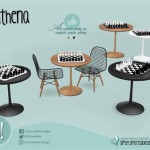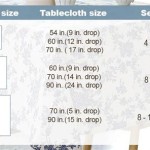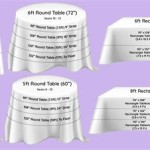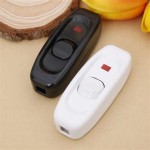Standard Dimensions of a Billiard Table
Billiard tables, also known as pool tables, are the central piece of equipment in a billiards room. The game of billiards, encompassing various cue sports, is highly dependent on the consistency and standardization of the playing surface. One of the most critical aspects of this consistency lies in the dimensions of the table itself. Standardized dimensions ensure fair play, allowing players to develop skills that translate across different locations and competitions. This article will explore the standard dimensions of billiard tables, delving into the reasons behind these specifications and the implications for gameplay.
The term "billiard table" often refers specifically to pool tables, particularly those used for games like eight-ball and nine-ball. However, it's important to recognize that other cue sports, such as snooker and carom billiards, also utilize tables with specific, albeit different, standardized dimensions. This article will primarily focus on the dimensions prevalent in pool, but will touch on other types for contextual understanding.
The dimensions of a billiard table are dictated by various governing bodies and organizations within the cue sports world. These organizations, such as the World Pool-Billiard Association (WPA) and the Billiard Congress of America (BCA), set forth regulations that ensure consistency and fairness in professional and amateur play. Adherence to these standards is crucial for sanctioned tournaments and provides a common ground for players to practice and compete.
Standard Table Sizes and Their Dimensions
Billiard tables are commonly available in three main sizes: 7-foot, 8-foot, and 9-foot. These designations refer to the overall length of the playing surface between the noses of the cushions. It's critical to understand that these are nominal sizes, and the actual dimensions have specific tolerances to maintain the integrity of the game.
The 7-foot table, often referred to as a "bar box," is prevalent in commercial establishments and recreational settings where space is limited. The playing surface dimensions for a 7-foot table are typically 39 inches wide by 78 inches long. These tables are popular due to their smaller footprint and relatively lower cost.
The 8-foot table is considered a step up in size and is common in homes and smaller pool halls. The playing surface dimensions for an 8-foot table are typically 44 inches wide by 88 inches long. This size provides a slightly more challenging playing experience compared to the 7-foot table, offering more room for shot development and strategic play.
The 9-foot table is the standard size used in professional tournaments and serious competitive play. The playing surface dimensions for a 9-foot table are typically 50 inches wide by 100 inches long. This larger size demands greater skill and precision, as the increased distance between the balls requires more accurate shot-making and positional play.
Beyond these common sizes, other variations exist, but they are less frequently encountered. These include 10-foot and 12-foot tables, primarily used for snooker, where larger dimensions are integral to the game's strategy and scoring.
Key Dimensional Specifications
While the overall dimensions are crucial, other specific measurements contribute significantly to the playing characteristics of a billiard table. These include the height of the table, the pocket size, and the cushion specifications.
The standard height of a billiard table, measured from the floor to the top of the playing surface, is typically between 29 1/4 inches and 31 inches. This height allows players to comfortably stand and execute shots while maintaining proper posture and control.
Pocket size is another critical dimension, influencing the difficulty of the game. Pocket openings must adhere to specific width guidelines, impacting the probability of sinking balls. The WPA and BCA provide detailed specifications for pocket dimensions, including the width of the mouth, the angles of the facings, and the shelf depth of the pockets. These specifications ensure that pockets are neither too forgiving nor overly difficult.
The cushions, also known as rails, are vital for ball rebound and strategic bank shots. The profile and composition of the cushions directly affect the angle and speed of the balls after impact. Professional-grade billiard tables utilize cushions made from high-quality rubber compounds that offer consistent and predictable ball response. The height and angle of the cushion facing are also carefully controlled to ensure optimal gameplay.
The playing surface itself, typically made of slate, must be perfectly level and free of imperfections. The thickness of the slate is important for stability and preventing warping, which can significantly affect ball roll and shot accuracy. Standard slate thicknesses range from 1 inch to 1 1/2 inches, depending on the table size and quality.
The cloth covering the slate, usually made of wool or a wool-nylon blend, provides a smooth and consistent surface for the balls to roll upon. The tightness and quality of the cloth affect ball speed and direction. Professional-grade cloths are woven with tight tolerances to minimize fuzzing and ensure consistent playability.
Impact of Dimensions on Gameplay
The dimensions of a billiard table significantly influence the strategy, skill, and overall playing experience. A larger table, such as a 9-foot model, demands greater precision and control due to the increased distances between the balls. Players must develop more accurate shot-making abilities and positional play to succeed on a larger table. The larger surface area also opens up more opportunities for strategic bank shots and complex ball combinations.
Conversely, a smaller table, such as a 7-foot model, often favors a more aggressive and fast-paced style of play. The shorter distances between the balls allow for quicker shots and more straightforward ball layouts. Smaller tables are often preferred by beginners and casual players due to their more forgiving nature and easier accessibility.
The pocket size directly affects the difficulty of the game. Tighter pockets require greater accuracy and precision, while more forgiving pockets allow for slightly less precise shots. Tournament-level tables typically feature tighter pockets, demanding a higher level of skill from the players.
Cushion quality and responsiveness are also critical factors in gameplay. Consistent and predictable cushions allow players to accurately calculate bank shots and control ball position. Poor-quality cushions can lead to unpredictable ball behavior, making it difficult to execute precise shots and maintain control of the game.
The levelness and smoothness of the playing surface are paramount for consistent ball roll. Even slight imperfections in the slate or cloth can significantly affect ball trajectory and shot accuracy. Professional-level tables are meticulously leveled and maintained to ensure a perfectly flat and smooth playing surface.
Ultimately, the standard dimensions of a billiard table are not arbitrary; they are carefully determined to ensure fair play, consistent gameplay, and a challenging experience for players of all skill levels. Adherence to these standards is crucial for sanctioned tournaments and provides a common ground for players to practice and compete on equal footing. The dimensions of the table directly influence the strategy, skill, and overall enjoyment of the game, making them a fundamental aspect of the billiards experience.

The Official Size Of A Pool Table Canadian Home Leisure

What Is The Standard Size Of A Pool Table Measurement Guide Room

Standard Pool Table Size Contemporary Home Office Furniture Check More At Http Www Nikkitsfun Com Standar Dimensions Sizes

Pool Table Standard Dimensions Free Dwg Layakarchitect

How Tall Is A Standard Pool Table Height Guide Bar 101

Correct Pool Table Dimensions To Leave Enough Room For Playing Billiard

Room Size Pooltables Com

Pool Table Room Size Guide Home Leisure Direct

How To Choose The Right Size Pool Table Hamilton Billiards Snooker Blog

What Is The Standard Pool Table Size Bar 101








